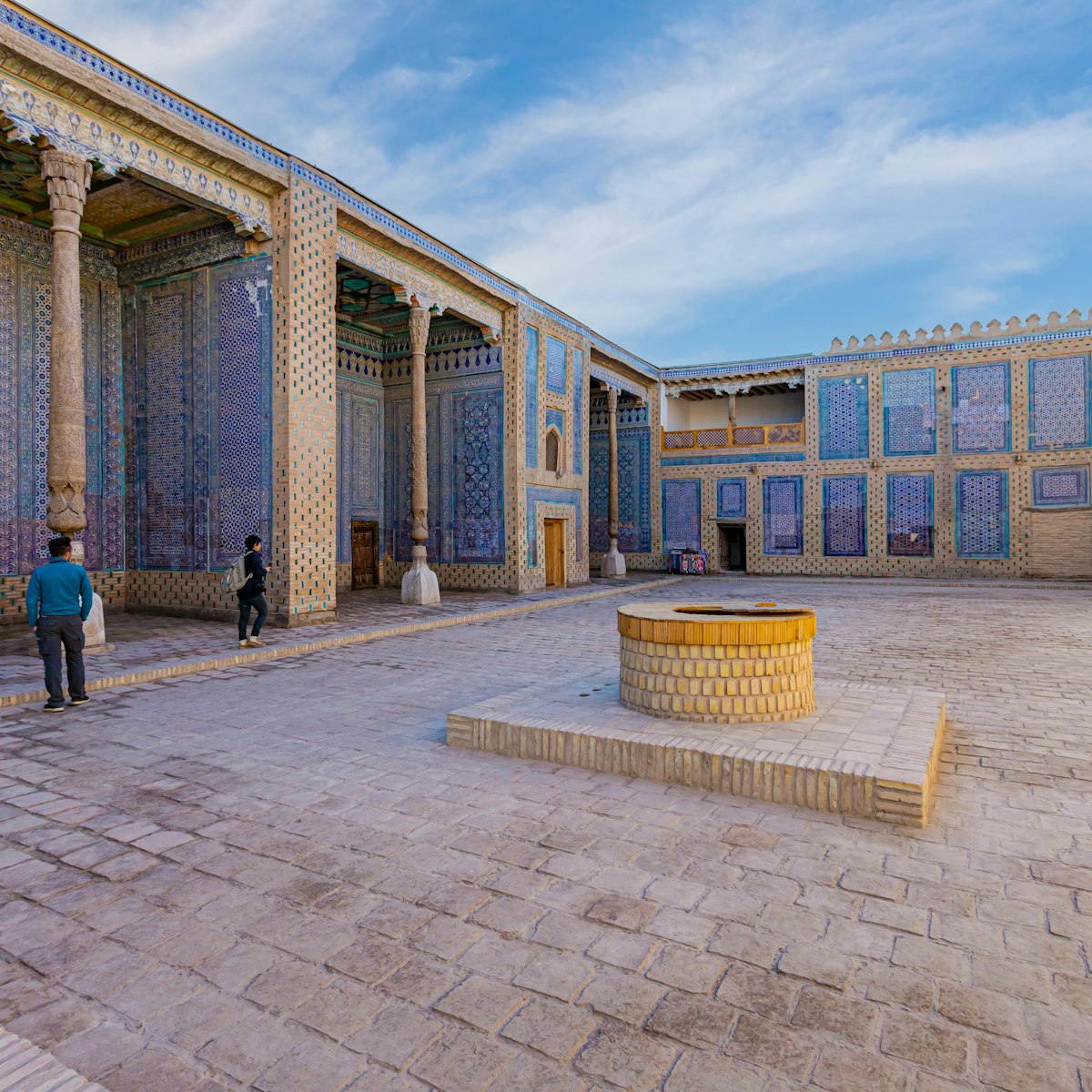To your left after you enter the West Gate stands the Kuhna Ark – the Khiva rulers’ own fortress and residence, first built in the 12th century by one Ok Shaykh Bobo, then expanded by the khans in the 17th century. The khans’ harem, mint, stables, arsenal, barracks, mosque and jail were all here. Apart from getting a peek at the life of the khans, the complex has some fine tilework and excellent views.
The small, low-slung building to the left of the entrance outside the main fortress is the Zindon, with a simple display of chains, manacles and weapons, suggesting how poor an idea falling foul of the khan would have been.
Once inside the Ark, the first passage to the right takes you into the 19th-century Summer Mosque – open-air and spectacularly ornate with superb blue-and-white plant-motif tiling and a red, orange and gold ceiling. There are some interesting displays on Khorezmian archaeology here.
Beside it is the old mint, now a museum that exhibits bank notes and coins that were minted here, including money printed on silk. Unfortunately labelling is only in Uzbek.
Straight ahead from the Ark entrance is the restored, open-air throne room, where the khan dispensed judgement. The circular area on the ground was for the royal yurt, which the no-longer-nomadic khans still liked to use. The tiled aivan (portico) is simply stunning.
At the back right corner of the throne room, a door in the wall leads to a flight of steps up to the watchtower, the original part of the Kuhna Ark, set right against the Ichon-Qala’s massive west wall. It's well worth paying the fee to climb up here – the city views are extraordinary, especially at sunset.







